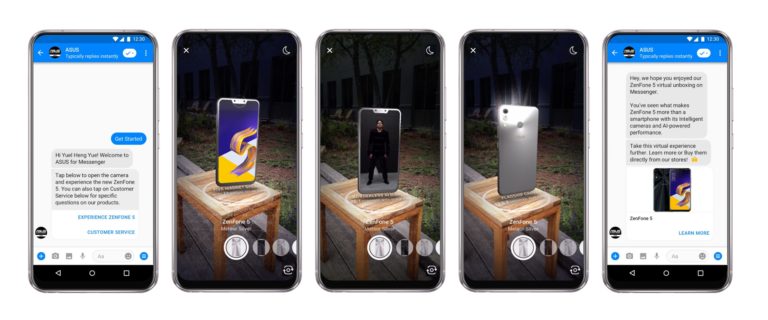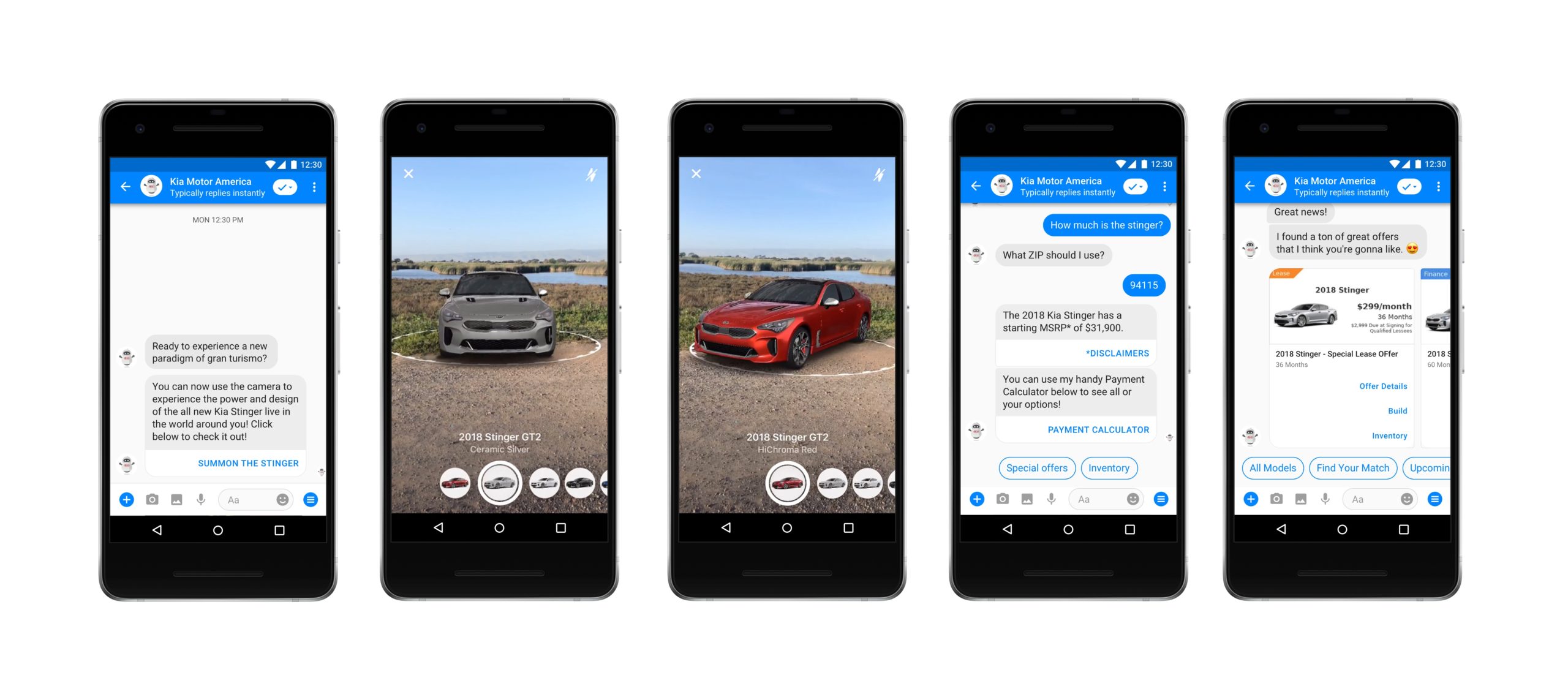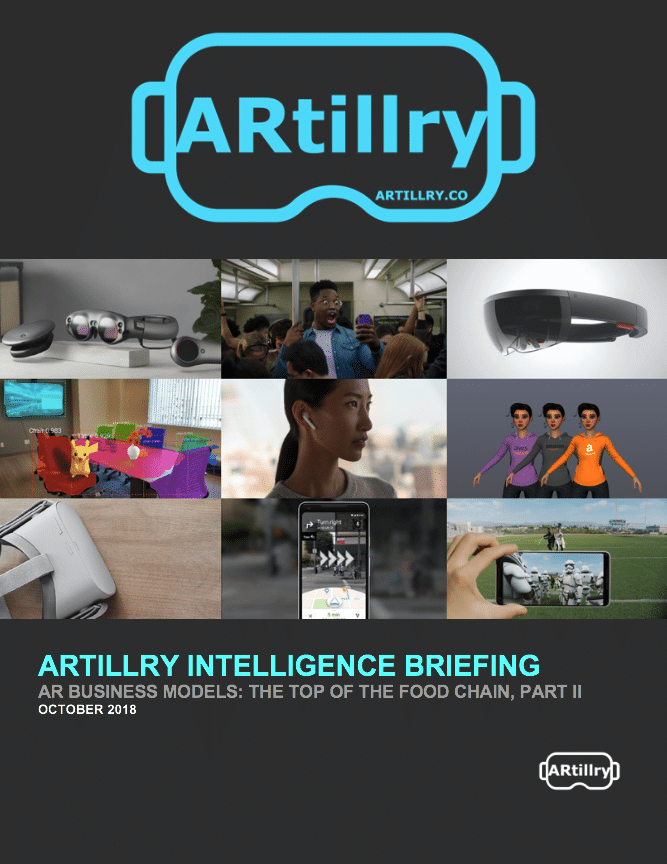
This post is adapted from ARtillry’s latest Intelligence Briefing, AR Business Models: The Top of the Food Chain, Part II. It includes some of its data and takeaways. More can be previewed here and subscribe for the full report.
Picking up where we left off in the first part of this report series (covering Google and Apple), how will Facebook make money from AR?
Like with Google and Apple, this question begins to reveal factors that signal the rest of the industry for strategic positioning. Carrying a key premise of this report series, Facebook’s AR initiatives support its core business, and its AR product investments support that model.
With that backdrop, consider Facebook’s core business. Its primary ad revenue correlates to the time we spend in its walled garden. AR brings more ammunition to keep us in that environment through visually immersive – and advertising-conducive – content to share with friends.
As further background, Facebook’s News Feed ads have grown stale and overcrowded so it’s motivated to innovate new forms of user engagement. That could happen in two areas, both of which build on the smartphone camera’s vaunted status among millennials: AR and Instagram.

Up Close & Personal
With prime positioning on ubiquitous smartphones, Facebook has followed Snapchat in making AR lenses a currency in social sharing. Its Camera Effects platform opens that development to brands or individuals that want to build AR experiences across Facebook’s mobile properties.
With that Camera Effects foundation — which is under-utilized given Facebook’s scale — it’s been rolling out new formats that make AR easier to digest. These are targeted especially at brand advertisers who are famously slow to adopt new technologies, and especially so with AR.
For example, AR in Messenger brings Camera Effects to 1.2 billion monthly active users. This offers a massive audience for brands to deliver AR graphics that spotlight products. More importantly, these experiences can drive towards real e-commerce transactions in Messenger.
Nike utilized this channel with an AR virtual podium that unveils its latest shoe release. It includes 360-degree product visualization that flows right into a transaction thread (see below). This brings immersive product views to an app where consumers and fans already engage with brands.
“You can actually walk to the shoe, get up close and personal, take photos and videos and share them with friends,” said Facebook’s David Marcus at F8. “When you’re done and close the camera, you’re back in the experience where you can buy the shoe right then and there.”

Full Funnel
Other AR integrations in Messenger include ASUS’ ZenPhone 5 virtual unboxing which saw 10x greater engagement compared with its non-AR campaigns. Kia likewise saw a 46 percent boost in dealer inventory searches, and phone calls from its car visualization campaign.
But more recently, AR was brought directly to the News Feed. Similar to standard News Feed ads, AR ads are placed programmatically based on social signals. But with an additional AR kick, News Feed AR ads let advertisers apply Camera Effects, including virtual product try-ons.
For example, launch partner Michael Kors built a campaign that lets users quickly go from the News Feed ad to a front-facing camera activation that virtually tries on sunglasses. Videos of those usually-boisterous try-ons can also be captured and shared for an additional viral kick.
More importantly, like the above examples, these ads flow into a transaction thread on Facebook or advertisers’ sites. This makes AR a rare “full funnel” ad format including awareness and direct-response. The latter explicitly demonstrates advertiser ROI through real conversions.

‘Gram It
Facebook is facing disruptive times when it’s losing advertisers due to data privacy issues, and hundreds of billions in market cap. On top of, or related to that, several advertisers have begun to doubt the ROI of news feed ads as the feed becomes more crowded. Enter Instagram.
Given Instagram Stories and its 400 million active users, it’s becoming a popular place for advertisers seeking premium ad inventory. And it’s coming together with AR, given that Camera Effects were recently made available developers to build on Instagram — a logical extension.
Connecting several dots, we believe that AR-driven e-commerce is coming to Instagram next, similar to the Messenger and News Feed integrations above. We say that because Facebook quietly announced that deeper native payments (and thus e-commerce) is coming to Instagram.
Bottom line: AR is expanding throughout Facebook’s products, and increasingly offering transactional functionality for AR-spotlighted products. This will expand Facebook’s “full-funnel” capabilities and should boost its standing in the AR ad landscape of the coming years.

To continue reading, see ARtillry’s latest Intelligence Briefing, AR Business Models: The Top of the Food Chain, Part II.

For deeper XR data and intelligence, join ARtillry PRO and subscribe to the free ARtillry Weekly newsletter.
Disclosure: ARtillry has no financial stake in the companies mentioned in this post, nor received payment for its production. Disclosure and ethics policy can be seen here.
